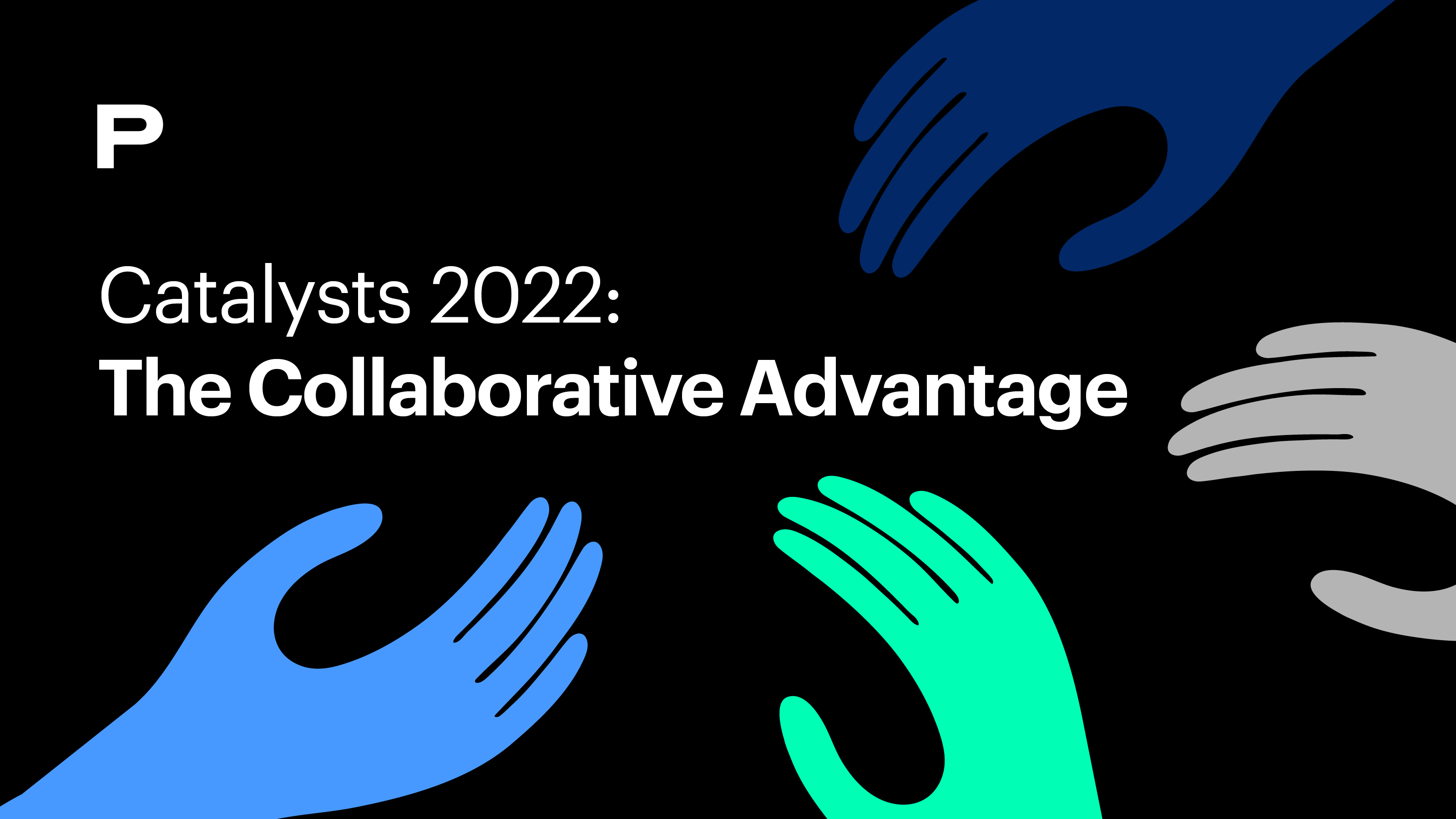BLOG
The Missing Secret to M&A Success: Organizational Culture
5 cultural pitfalls to avoid in pursuit of maximum M&A value.
Despite economic uncertainty and a slower rate of deals, organizations will continue to utilize mergers and acquisitions (M&A) to grow, diversify, penetrate new markets and develop new capabilities.
M&A events represent a unique opportunity to transform a business, externally and internally. Externally, it can serve as an opportunity to enhance reputation, deliver on emerging or underserved needs and increase market share. Internally, it serves as an opportunity to drive lasting cultural change and inspire renewed purpose within the evolved organization.
There’s a lot written about mergers failing because of culture. Unfortunately, most organizations are not using company culture effectively or systematically to maximize value and minimize risk in their deals. Organizations and deal team’s care. But it’s not a significant part of the integration playbook and doesn’t receive the required attention to make it accretive to the deal.
At Prophet, we view culture as a hidden asset in determining the success of an M&A deal. Yet, culture is integral to the success of an organization. As organizations become more digitized and automated, people change businesses, which is why we have developed the Human-Centered Transformation Model™. Our Human-Centered Transformation Model™provides an easy and accessible, holistic lens for unpacking complexities and highlighting and understanding specific components to address cultural integration.
With this framework in mind, here are five common cultural pitfalls many companies face during M&As and actionable insights on how you can turn the tide and achieve maximized return on your investment.
1. Not Applying the Same Rigor to Cultural Analysis as to Deal Economics
M&A teams pride themselves on meticulous due diligence. They dig into every financial, legal and operational element they can find. But they are often under-equipped for systematic analysis of the culture of the company they are acquiring. Nor do they detail the pathway to cultural integration in the same way that they would for the financial and legal elements to prove the viability and value of the deal.
To overcome this challenge, M&A deal teams must determine cultural similarities and differences between the two organizations before finalizing the deal. To help our clients do the proper cultural due diligence, we build this critical cultural analysis and integration process into our transformation and integration playbooks. Gathering cultural data pre-deal reduces risks and speeds up integration by informing the strengths and differences between companies.
It’s critical to find common ground to build on. Identify the bright spots that should be preserved due to intrinsic or financial value. It is also an opportunity to anticipate friction and allocate resources to support rapid integration.
2. Lack of Transparency and Intention About Strategic Cultural Choices
In most merger situations, leaders don’t clearly articulate the type of culture required to make the integration and future NewCo growth strategy successful.
However, being honest and upfront about the cultural preferences that best support strategy, brand and integration strategy will begin the merger on a solid foundation and earn the trust of both sets of employees.
Whether there is a dominant culture, a selection of specific attributes from both organizations worth merging, or a net new culture, executives must be transparent with employees. Be honest and open about the decisions, processes and rationale for every choice to preserve trust and respect across organizational lines.
One critical choice to get right is who is selected for leadership positions. Individuals chosen for the top jobs within the NewCo signal to employees whether or not elements of their legacy organization’s culture and values will endure. The goal at this stage is not to be popular. Instead, it is to set a clear strategic frame for the people and cultural aspects of the journey ahead and a clear “why” that explains the decisions and the approach.
3. Failure to Align Leaders From Both Parties
M&A deals often come together in a rush. There may be multiple bidders. Or companies aware of the market anxiety that comes from a prolonged rumor phase, are anxious to make deals official. Once signed, the focus shifts rapidly to the physical and operational integration elements – there is always a lot of work to be done, and it’s very easy to overlook perceived ”softer” topics such as values and beliefs.
That’s a mistake. As early as possible, leadership groups from both organizations need to come together to co-create purpose and values, the ambition for the desired culture and a roadmap to get there. It’s also essential to involve employees as early as possible. Regardless, if leaders from both sides don’t have the opportunity to debate and align on a shared ambition, direction and journey, the road ahead is much harder. Leaders from both sides of the NewCo must have a shared message for the organization’s purpose and values rather than deferring to their unmerged entities’ old purpose and values.
Aligning the cultural direction and ambition during the early stages of an M&A deal is especially important when acquiring start-ups, which are often based on a radically different ethos than larger companies. Without deciding how to protect that difference from the outset, the acquirer can wind up squashing the cultural traits that are most valuable for growth.
The nitty-gritty of cultural integration can come later. But there must be some initial high-level sense of how that might happen amongst the leadership group. Without a shared vision for what the united cultural DNA will be–the NewCo’s purpose and values–the deal is unlikely to fulfill its promise.
4. Not Managing Cultural Messages – Everyone Is Watching Everything
Once leaders from both parties have reached a consensus on what this new DNA will be, they must actively and consistently model those values as integration begins and beyond. Our research on Catalysts highlights leadership behavior as a fundamental lever in cultural transformation, especially during M&A events.
In times of uncertainty and change, all eyes are on leadership. Every action and message–intentional or not–is analyzed and interpreted by employees. Never mind the top leader appointments, even decisions that may seem tactical, such as the choice of ERP platform or brand color palette, can send a cultural message. Senses are heightened in times of change. An organization failing to manage cultural messages consistently creates unnecessary fear and upset, impacting productivity and value.
Intentional signaling early on and careful consideration of decisions, timing and positioning –with specific details about this new, merged culture–will be critical to building trust and engagement for the journey ahead. Being thoughtful about language, decisions, symbols, and rituals in the moments that matter will enable the integration to proceed at a quicker pace. Understanding employees’ experiences, perceptions and needs are essential.
Put yourself in the shoes of employees. Use tools rooted in neuroscience, such as “SCARF,” to establish a standard toolkit and language, invite dialogue, track trends and equip your leaders to make good decisions and deliver consistent messages in line with your chosen culture strategy.
5. Stopping Too Early
It takes longer than most teams expect to holistically embed the “new” culture–to make it the culture. Leaders involved in the deal are like the elite athletes in a marathon. They are off and running before the employee base has even reached the start line and can quickly move on without thinking about those behind them. Once leaders have passed the initial messaging phase, they are often surprised at the depth and time commitment required to make cultural changes stick.
This work requires detailed roadmaps to be clear on the destination and the steps to get there. These need to be measured and managed, even beyond the early integration phases, to help leaders stay the course and bring people with them.
Prophet’s Human-Centered Transformation Model ™️ (HCTM) provides leaders with an accessible lens for unpacking complexities and highlighting specific components that require focus–such as required skillsets and capabilities, important behaviors and symbols and the central structures, processes and governance mechanisms. The priorities can then be easily explored and understood to support rapid integration and drive sustainable value.
Throughout the journey, leaders can promote the foundational DNA elements of the organization’s mission, purpose and values to act as the north star as they track tangible outcomes and signs of progress against the roadmap.
FINAL THOUGHTS
The effort is worth it – your people and shareholders will thank you. M&A events offer a unique opportunity to transform an organization’s business strategy and customer perceptions and to drive lasting cultural change. Building a human-centered approach into your M&A playbook is essential (or adopting Prophet’s playbook!) –people are the way to unlock the deal’s success. Co-create and share the “new” organization’s cultural ambitions as early as possible. It will build trust, create transparency and help realize the deal’s value.
Ready to unlock the value of an M&A event through culture? Connect with our experts today.



